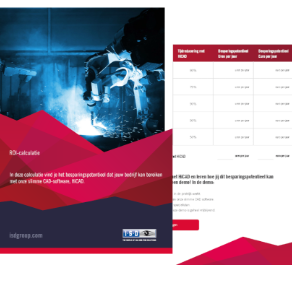
Switching between different drawing programs, converting different file formats to your own specifications and adding dimensions manually: all processes that cost extra time and make the customer wait longer for a part. But how do you model files quickly and efficiently? We explain it in this blog article and share three best practices.
In short, modelling is the creation of a drawing in a CAD programme. Both in 2D and in 3D. For modelling, you can start with a 2D drawing and convert it to 3D later, or you can immediately start with a 3D model. For example, the customer asks you to produce a part. But before you can start making it, you need to make a CAD drawing with the right dimensions and your own specifications. Modelling is therefore the making of the desired part or sheet metal with a 2D or 3D drawing.
Time is money. Also for the metalworker and his customers. Drawing by hand and then controlling a machine is a thing of the past. When your CAD drawing is ready, you transfer it directly to the machine to create the model. Moreover, the drawings help you to analyse whether it is possible to produce the sheet metal in that way. Is a hole too close to a setting? Then there is a good chance that the hole will deform during bending. By using CAD drawings, you work much more accurately, which ultimately reduces failure costs.
In addition, competition is fierce in the metalworking industry. Customers need a part within a certain timeframe so that they can continue with their order. If they have to wait longer for a part because production didn't go well, they will outsource their next order to another metal fabricator. By using CAD drawings, you can take orders into production faster and more accurately.
With the right CAD software, you can read in almost any file, for example DXF or STEP files, and model your files efficiently. This is just one of the ways to increase your productivity as a metalworker. Curious about more tips to produce faster with less failure costs? Read our white paper '5 essential tips for more productivity in metalworking'.




